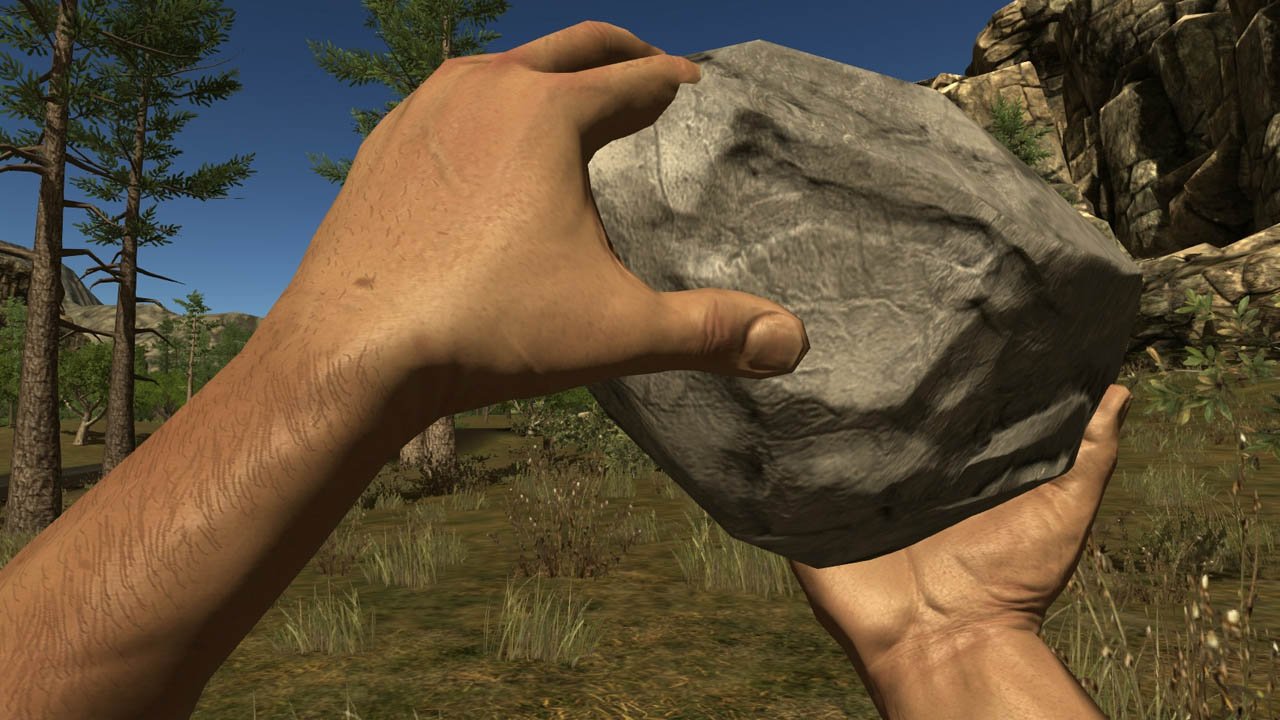Rust is, in some senses, a rags-to-riches story. Facepunch Studios’ multiplayer survival simulator starts off by depositing the player on a deserted island, their inventory consisting of nothing more than a rock, two bandages, and a torch. With only these few tools at hand, though, they’re capable of transforming themselves from a naked drifter to a heavily armed warrior with a fortified home. The ability to go from being a vulnerable nobody to a highly successful member of one of Rust‘s many servers is, I think, the game’s main draw. Rust continues to top Steam’s bestsellers list week after week for the simple reason that everyone loves building something out of nothing.
There are plenty of videogame mechanics that take advantage of this fact. Starting up a new character in a role-playing game is exciting because the possibilities of crafting their skills and personality seem limitless. We set out on adventures equipped with a wooden sword and ragged clothes for protection, knowing that by the time the story comes to an end our avatar will be decked out with gleaming armour, broadsword, and a wealth of magic spells. RPGs are built on the idea of rising from humble beginnings to become someone powerful. Every level up provides larger pools of hit points, stronger attack ratings, and opportunities to turn a weak, blank slate of a character into a tough, fully customized one.
This same tendency is found in action and shooting games as well. Call of Duty 4: Modern Warfare‘s multiplayer, with its levelling systems and unlockable equipment, set a new standard for online modes upon its release. Since then, nearly every developer has seemed to realize that players want a sense of progression from their games of deathmatch or capture the flag. They want to build up their profiles, marking the time they put into the game with fancy equipment, perks, and a number indicating the level they’ve reached. Similarly, Assassin’s Creed II: Brotherhood found a way to keep players invested in its story by offering light city management elements. Since its plots saw protagonist Ezio Auditore da Firenze helping rebuild Rome’s many shops and historical landmarks, it only seems natural that players would be able to see the result of their efforts manifested in visibly restored buildings. The city felt more complete as Ezio took it back from the corrupt officials that served as Brotherhood‘s villains. Players were given a chance to rebuild Rome over much longer than a day.
In this sense, Rust‘s popularity isn’t too surprising. It is a more explicit use of the gameplay systems that players have always responded favourably to. Everyone loves to see their effort reflected with something tangible, whether it’s a high-levelled character, a newly-built tower, or an avatar who progresses from a naked weakling to a powerful presence in a multiplayer world. Rust isn’t the first to explore these kinds of gameplay concerns. After all, titles like Mojang’s Minecraft, Klei Entertainment’s Don’t Starve, and Re-Logic’s Terraria are successful because they’re so skilled at offering ways for their audiences to establish themselves in sandbox environments. Games that provide an enormous amount of freedom can be overwhelming, but when combined with mechanics that allow players to build something to mark their place in the vacuum — either by upgrading their ability set or actually constructing houses and landmarks — it’s possible to ground even the most open of open worlds. Rust, DayZ, and Starbound may be current videogame darlings, but their popularity shouldn’t be too surprising.
Games very much like them will continue to be made for the foreseeable future and, even if demand for survival/building titles does begin to wane, the design principles that inform their mechanics will still be felt in nearly every other genre. Playing games can be a way to pass the time, learn new things, or experience other points of view, but most everyone wants to see the attention given to them reflected in some way.




